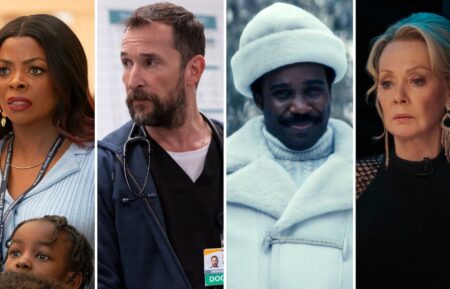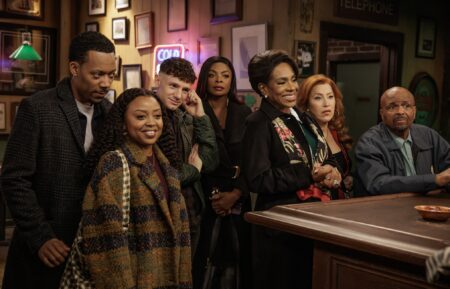Jon M. Chu on Bringing ‘In the Heights’ to the Screen: ‘I Hope That This Is Healing’
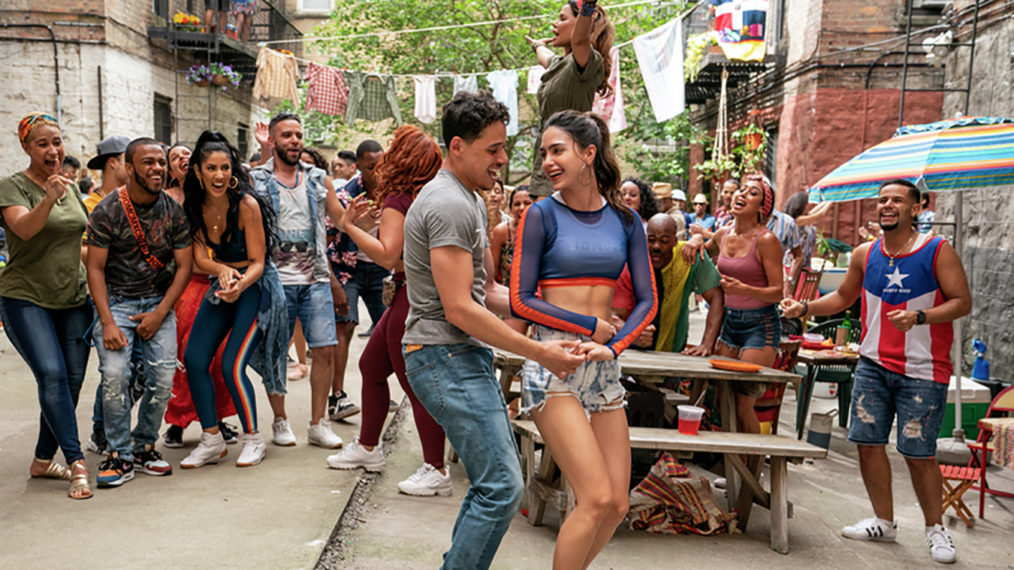
Q&A
Start with the infectious rhythmic flow of Broadway’s Hamilton, add the visual spectacle of Crazy Rich Asians and sprinkle in a number of nods to the classic Hollywood musical and you have the winning recipe for In The Heights. Delayed from last year due to the pandemic, the new feature film premieres on HBO Max on Friday (as well as in theaters) and is destined to stand as a classic among modern musicals.
In the film, based on Lin-Manuel Miranda‘s Tony Award-winning Broadway musical (pre-Hamilton) and directed by Jon M. Chu (Crazy Rich Asians), we meet Usnavi (Anthony Ramos), who is living in the Washington Heights community of New York City, and serves as both the film narrator and central figure. Like a lot of the people in the community, Usnavi has big dreams that could take him away from ‘the Heights.’ But his love for Vanessa (Vida‘s Melissa Barrera), and myriad family issues might just keep him from ever seeing those dreams become a reality. Usnavi’s best friend Benny (Corey Hawkins) may also just lose his heart to Nina (Leslie Grace), who has returned from college. All these characters speak and sing of their dreams, and viewers will find it easy to get swept up in all the joyous love and community life.
Our Jim Halterman had a chance to check in with Chu about his visual inspirations for the film, as well as how important it was to shoot in the actual Washington Heights neighborhood and what the challenges were in some of the film’s biggest numbers.
What were some of your musical inspirations from film or theater? I got a Busby Berkeley vibe in some of the overhead shots in the pool number.
Jon M. Chu: Yes, I was definitely influenced by Busby Berkeley and Esther Williams, of course, in the pool, to show these actors with these beautiful colors and all shapes and sizes and ages that could have been cast in those classic musicals if only they’d been given the opportunity. I was inspired by Meet Me in St. Louis, especially the framing of that film, in the Usnavi shot of him being trapped in his bodega. I was inspired by, of course, Singing in the Rain, The Sound of Music, even Joseph and the Amazing Technicolor Dreamcoat. All of these though come down to the source of why musicals exist, which is when words aren’t enough. I loved being able to take Lin’s music and words and blow it up to a cinematic vision.
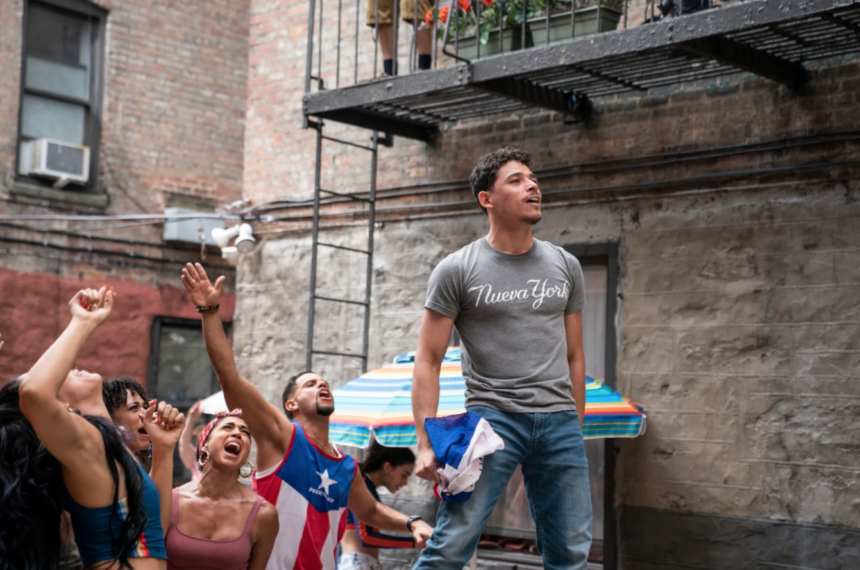
Warner Brothers
What would you say is the thematic through-line for the film?
I think there are many. But, in the end, “home” is a big one, and “dreaming” of course; that dreams, and the American Dream specifically, is not something you are given. It’s something you actually have to fight for. Also, that home is a nest that you have to build yourself. Each generation builds a new piece of that nest and we are always reaching for something better than what we have now. How we get there is something each individual figures out on their own, and they feel hard and lonely during that. But I think the movie shows that with your community and your family and even with movies, that you are not alone and that it’s worth the fight.
How important was it that you shoot on location in Washington Heights? What was the percentage on location vs. sound stages?
We shot most of the movie on the streets of Washington Heights. Washington Heights was a main character in our movie and in fact was a main part of our crew because it determined so much! For example, Highbridge Pool was not written in the script, it’s something that was introduced to us by Quiara [Alegría Hudes, screenwriter for In the Heights] and Lin and we were compelled to put it into the movie. The 191st Street tunnel was so extraordinary we had to build a moment with [the song] “Paciencia y Fe” with Abuela Claudia in it. The intersection is real. All the apartments were real apartments. The only things that were shot on a stage were the bodega, because the inside of a real bodega was just too small for us to fit cameras with singing and dancing. Same with the salon. They were just too small, so we needed space to do them in. And of course, “When the Sun Goes Down,” singing on the side of the building, we had to construct a giant rotating wall for them to dance on.
What was the toughest part of shooting any of the musical numbers?
The pool was very difficult considering we had probably 500 to 600 extras of all ages from 5 to 80. There were safety issues, we had to have lifeguards making sure nobody drowned. The amount of towels to keep people dry, and not just once but over and over again so that nobody got hypothermia. Plus, it was raining those summer days, so we had to stop and start a lot. We had fire marshals because we had barbecues going. And of course, we have our full cast present. They each have their own section to perform and deliver acting-wise and they all had to interweave to come together at the end. So it was many levels of storytelling that had to come together. But that’s sort of representative of how the whole movie needed to be in sync and how everybody met the moment and more.
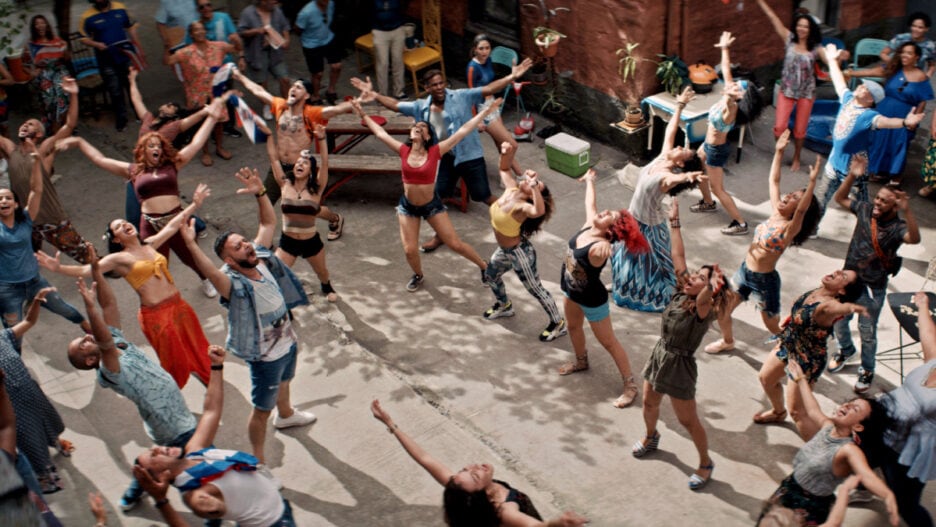
Warner Brothers
Anthony Ramos really anchored the film so well — what do you think he brought to Usnavi?
We really wrap the whole movie around him and his performance. In order to play any of the roles in our movie, each of our actors had to speak multiple languages: the language of dialogue, dance and singing. Anthony interwove those unlike anyone else. He could fall in and out of those languages effortlessly to the point where the audience doesn’t even know that the singing has begun. Anthony brought a truth to every word, to every note he was singing, it was never a performance for him. It was always a necessity to express an emotion and our audience gets to receive that emotion through whatever language was best at that moment. He just has truth through and through in him, and our whole movie feels like that because he was our North Star.
Were there any numbers in the film that were not in the Broadway show or are they all the same musical numbers?
We definitely had to cut a bunch of musical numbers and we definitely had to adjust many of them. For instance, “It Won’t be Long Now” with Vanessa, we had to build out her character more. We had to understand what she wanted. Not just that she wanted to go downtown, but why she wanted to go downtown. Because she wanted to be a designer, and she wanted to be seen as more than just the pretty girl on the block, she wanted to be heard. So we had to build in that yearning and we had to build in the one person who is seeing her and hearing her but she just doesn’t notice, which is Usnavi. So while it is the same song, it’s broken in a way that the nerve endings and the connection is very different than in the show. And I think we had to do that for almost all the numbers.
Given the film is overly very upbeat and positive, how did you keep those heavier, sadder moments from weighing it down too much?
I think nothing is given to you. I think joy comes from survival. Joy comes from persistence. Joy comes from working together to get over the obstacles in front of you. And I think that’s the biggest lesson that Washington Heights can give to the world. That struggle is real. And we all struggle in our different ways; but with each other, we can get through anything. And there is always tomorrow. I think that hope is essential to where we are right now in the world, and I hope that that’s what we get from this movie. Washington Heights is the one who’s teaching the lesson to the world in how you dust yourself off and get back up again. How beautiful it is that a lesson that they learned over and over again about feeling powerless can help us feel powerful again together.
I loved seeing Lin pop up in the film. What was having him on set like given this was his baby when it was on Broadway?
It felt like we were shooting in his backyard, so him visiting was like the friendly neighbor coming by to check things out. I think he loved every moment of being there, that he just came more and more. I could not ask for better creative partners than Lin and Quiara who would guide me in all the questions I had. I was allowed to ask stupid questions all the time. And in the specificity of the food, of the behavior, of colors, costumes, the patterns, location, I felt very lucky to have guides like Lin and Quiara to be there. It was intimidating, but they really just expected us to give more every time, and they pushed us all.
What do you hope audiences take from the film, especially after the past year we’ve all endured?
I hope that this is healing. I hope that they see that when you’re down, it isn’t the end. Unlike a movie, life continues. If there’s anything that I learned from Washington Heights, it’s that they march on no matter what. And it’s time that the movies recognize that. It’s time that we, as a society, recognize the beauty and the joy and the hopes and the dreams of people in Washington Heights. Like a person who works in the bodega, the guy who opens the elevator or wipes the floors, they are not to be ignored. They are as important, and as worthy of a big screen adaptation of their hopes, and their dreams and their struggles as anyone who has ever gotten a chance to be in a movie. They are heroes. And I hope that we get to see our neighbors like that more and more. Whether you recognize your own family in it, or whether it’s a totally new experience for you.
<>
In the Heights, HBO Max, Friday, June 11







